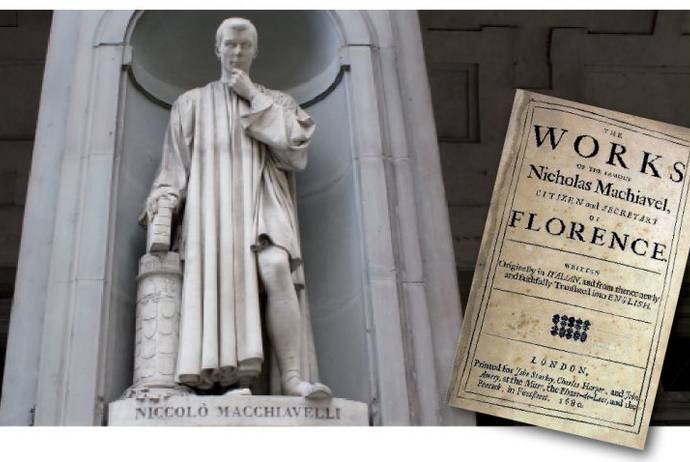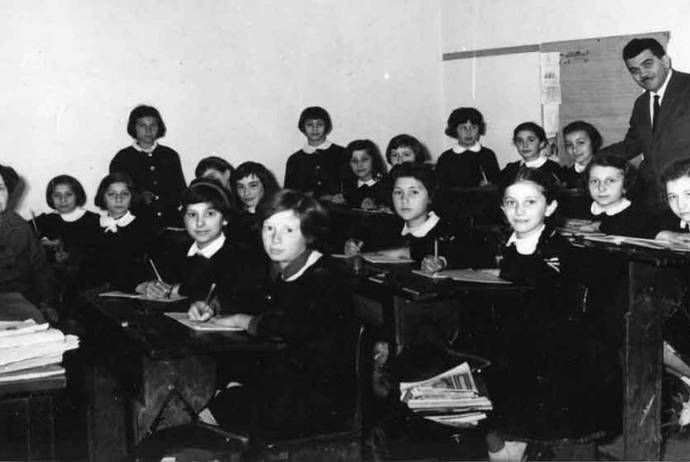Gianni Amelio, one of the most influential Italian film directors of our times, was recently in New York to present his two latest films at Open Roads, the Italian film festival at Lincoln Center curated by Antonio Monda.
I interviewed him for i-ItalyTV in the garden of Casa Italiana Zerilli-Marimò right before the beginning of the round table discussion that featured the entire artistic delegation of Open Roads (see video). Rather unusually for a film festival, Open Roads invited Amelio to present a double bill: the feature film The Intrepid and the documentary Felice chi è diverso. I started my discussion with Amelio by asking him about the documentary, because that’s where Amelio got his start in filmmaking. After an apprenticeship on the set of documentaries by directors like Liliana Cavani, Amelio began making his own films, starting with a documentary about the making of what probably remains the most epic contemporary Italian film: Bernardo Bertolucci’s 1900.
How would you describe your relationship with documentary filmmaking?
I don’t see much difference between documentaries and features; it’s all cinema to me, and I take both [genres] on with the same spirit, searching for the truth of feelings. Whether those feelings belong to a real person or to the character that an author has created is of little relevance to me.
In your latest docufilm presented at Open Roads festival in New York, you interview homosexuals about their life in the 1900s. Where did this idea come from?
I didn’t get the idea from people but from things. Newspapers, news reports, some images from movies dating back to the ‘50s and ‘60s. The language being used then would be totally unacceptable today. These images conveyed such cruelty and viciousness that I wanted to compare them with the private and personal lives of homosexuals in the postwar period. Stories of extraordinary moral strength were being belittled, insulted and crushed by the media.
The other movie you presented at Open Roads, L’intrepido (The intrepid), tells the story of a man who creates a new job for himself every day; he replaces anyone who cannot do her/his job for the day. Is the economic situation in Italy so disastrous?
I believe that right now in Italy—but not only there—the predicament of our survival is very worrisome. The prospects for the future for our children and ourselves are so bleak that we cannot afford to face them with tears in our eyes.
And so you chose a comedian to play the role...
Yes, we need to explore the road of paradox. When I tell the story of someone whose job is “being a replacement,” I am obviously trying to be provocative. The provocative approach makes the issue even more serious. I dealt with this problem by using a very popular Italian comic actor, who is, however, endowed with a sense of humor that doesn’t belong to the Italian tradition, but rather to a far older one that has its roots in the US. I was thinking more of Charlie Chaplin’s Little Tramp or Buster Keaton.
As you mentioned, many of your viewers are Americans with a passion for Italy, or Italian Americans whose personal or family history is one of migration, a theme that is very close to your heart. One of your best and most successful films on this topic is Lamerica (consciously misspelled), which is a story of emigration and interaction between people of different origins. Your own familiarity with migration comes from your father, who left for Argentina when you were very young. What is your relationship with this topic today?
My father’s emigration represented the division and ultimate dissolution of my family. To me, making a film like Lamerica in Albania meant reconstructing a family of my own, since it’s there that I met my son. I adopted an Albanian boy and, through him, his whole family. Today he bears my name. He is a grown man with three wonderful daughters. He somehow compensated me for my missing out on my original family. He allowed me to create a new family, which is what I care the most about now.
Another movie with biographical elements is Le Premiere Homme, one of my favorites. How does Gianni Amelio fit in Camus’ deeply autobiographical novel about his return to Algeria?
Camus seems to tell a very personal story, strongly characterized by the fundamental political and historical background of Algeria going through the early phases of French decolonization. I’d say that his story resembles mine, especially my childhood. It all started because Camus’ daughter knew some of my movies and trusted me to direct a very intimate and difficult story to approach. She relied on these autobiographical elements and parallels. For example, like Camus, I grew up without a father, with a very young mother and an extremely authoritative grandmother. And Camus’ childhood, like mine, was marked by hunger.
What does Gianni Amelio do when he is not working?
I live. Cinema is not my life’s goal; it’s a learning tool. Of course, when you make a movie, you dig deep into your soul, right into your guts, but above all you get to know others. You search for other people’s truths, and find your own in the process. Cinema is an extraordinary vehicle that allows you to continuously enrich your life. The human mind is flexible and it becomes even more so if you fill it with passages from books, images from movies, pieces of music or paintings. I think we shouldn’t spend our time spasmodically looking for success, for the big movie or award, but rather try to really know the things we love, and love the things we already know even more.


































